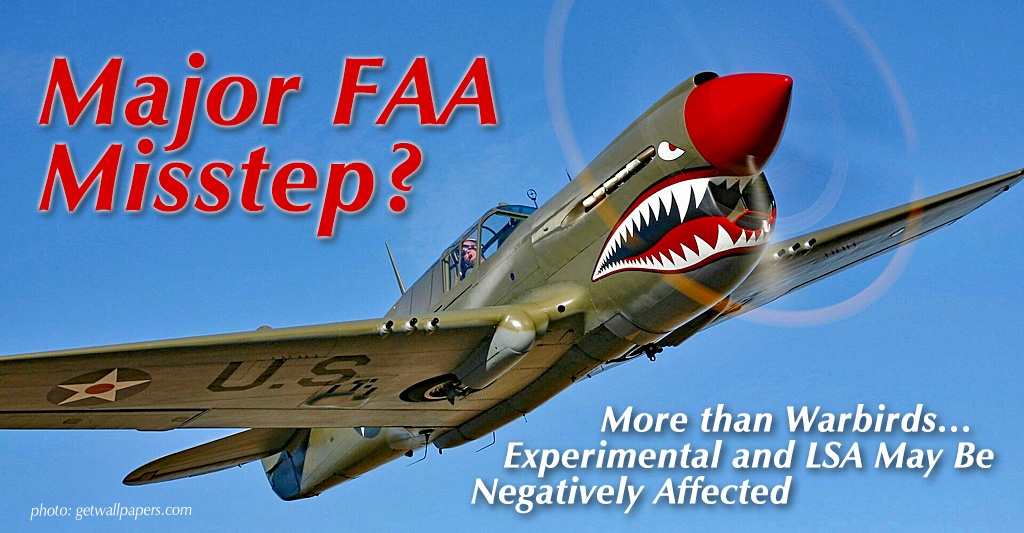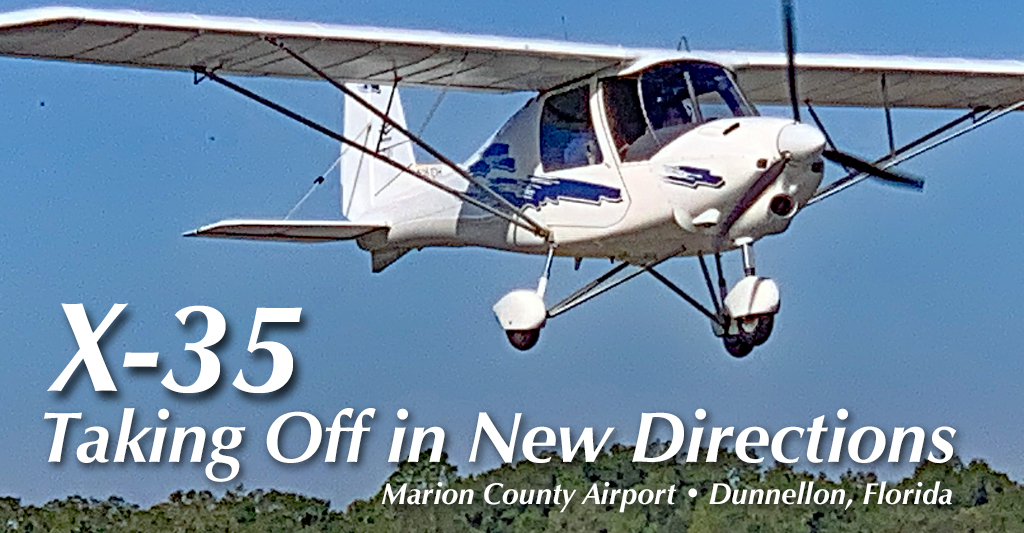
If I’ve heard one lament repeatedly over a long career, it is that current pilots don’t see enough new pilots coming into aviation. Are you one who worries a little or a lot about that? If not, you are a rare pilot. Is it any wonder, though? The price of aircraft is way, way up. This applies to used aircraft and new — just like it does with your groceries or gasoline. The cost of maintenance is high and rising. Insurance is very expensive (for airplanes as well as cars or houses). Hangars are unavailable with years-long waiting lists at many airports. More than ever it can seem, aviation is an activity for those with fairly thick wallets. The squeeze on modest budgets has rarely been this demanding. Yeah, all that, but this website nonetheless discovers the affordable end of aviation. In that pursuit, I was drawn to an airport with an encouraging twist on the affordability squeeze play.


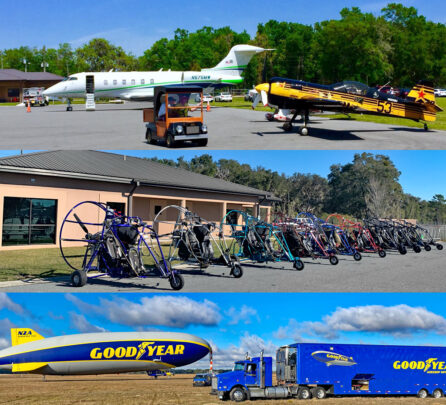
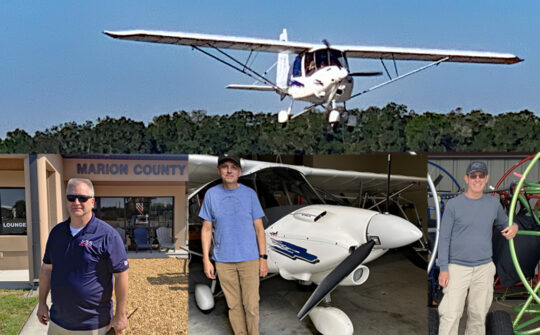
 Dunnellon is in Marion County, not Ocala but the close proximity helps both. Under airport manager (and pilot) Mike Grawe's leadership through the last six years, X35 has become a thriving facility with energetic new businesses sprouting up.
What may be most important is the presence of new, younger businessmen entering affordable aviation. People like me with decades of experience fill a useful role but we're like disappearing airline captains. We'll be moving on and entry-level aviation needs fresh blood. X35 put out the welcome mat… and it's working.
Dunnellon is in Marion County, not Ocala but the close proximity helps both. Under airport manager (and pilot) Mike Grawe's leadership through the last six years, X35 has become a thriving facility with energetic new businesses sprouting up.
What may be most important is the presence of new, younger businessmen entering affordable aviation. People like me with decades of experience fill a useful role but we're like disappearing airline captains. We'll be moving on and entry-level aviation needs fresh blood. X35 put out the welcome mat… and it's working.

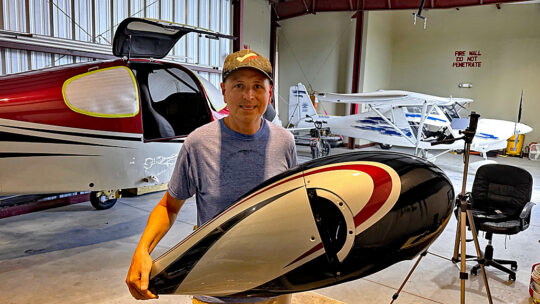


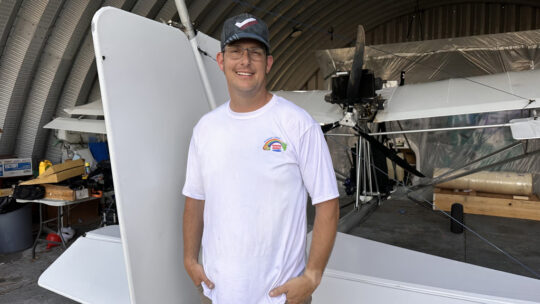 Randy has taken over an existing operation, is preserving the originator's names
Randy has taken over an existing operation, is preserving the originator's names 
 These two new businesses join the veterans at X35 adding to the success Mike Grawe has been building.
Central-northwestern Florida and its fancy equestrian ranches exist alongside a vibrant
These two new businesses join the veterans at X35 adding to the success Mike Grawe has been building.
Central-northwestern Florida and its fancy equestrian ranches exist alongside a vibrant  Some who try eventually hit upon the right formula but no one says this is easy. Technology has been particularly helpful to smaller enterprises, especially those that serve customers widely dispersed across the country. Whatever you think of social media, the fact is they help those with specialized interests find people who can provide services.
Some who try eventually hit upon the right formula but no one says this is easy. Technology has been particularly helpful to smaller enterprises, especially those that serve customers widely dispersed across the country. Whatever you think of social media, the fact is they help those with specialized interests find people who can provide services.
 One fellow has found his magic carpet. His instruction calendar has a few available slots in 2023 but he has already almost filled this year's schedule book. How did one man succeed and who is this story about?
One fellow has found his magic carpet. His instruction calendar has a few available slots in 2023 but he has already almost filled this year's schedule book. How did one man succeed and who is this story about?
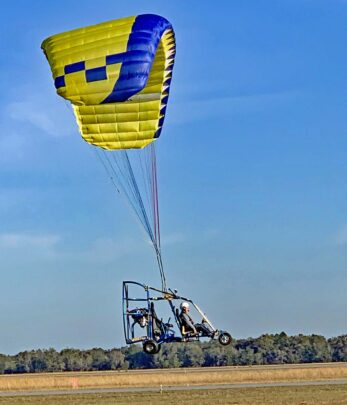 That work has been gratifying — and helped move the entire LSA industry forward — but Roy's personal choice of flight and his passion is focused on powered parachutes.
While he was working in this field and building his enterprise, Roy and I linked up in a new way in 2014, the 10th anniversary of SP/LSA. Roy had compiled many aspects of the regulation that could be improved. He assembled an impressive booklet of desirable changes complete with suggestions. Working together, Roy and I drew people from industry, from membership associations, and from FAA to a meeting at Sun 'n Fun nine years ago.
That work has been gratifying — and helped move the entire LSA industry forward — but Roy's personal choice of flight and his passion is focused on powered parachutes.
While he was working in this field and building his enterprise, Roy and I linked up in a new way in 2014, the 10th anniversary of SP/LSA. Roy had compiled many aspects of the regulation that could be improved. He assembled an impressive booklet of desirable changes complete with suggestions. Working together, Roy and I drew people from industry, from membership associations, and from FAA to a meeting at Sun 'n Fun nine years ago.
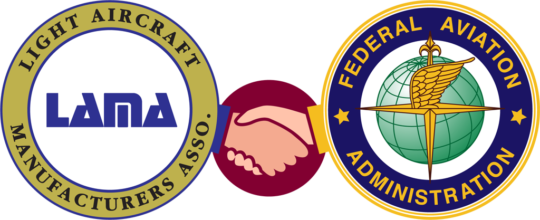 Roy's hard work on advocacy for LSA — for which I was honored to be his partner at twisting FAA's arm — has paid off in a big way. The coming regulation incorporates every initiative that Roy and I proposed for Mosaic.
Roy's hard work on advocacy for LSA — for which I was honored to be his partner at twisting FAA's arm — has paid off in a big way. The coming regulation incorporates every initiative that Roy and I proposed for Mosaic.
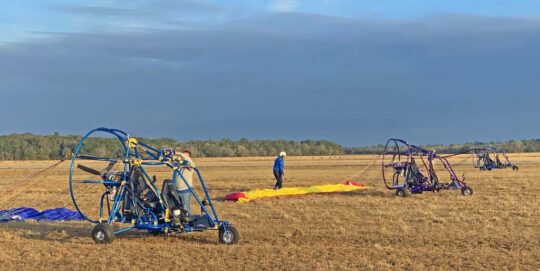 But important as this work may be, that's enough about advocacy. Let's talk about flying machines!
But important as this work may be, that's enough about advocacy. Let's talk about flying machines!
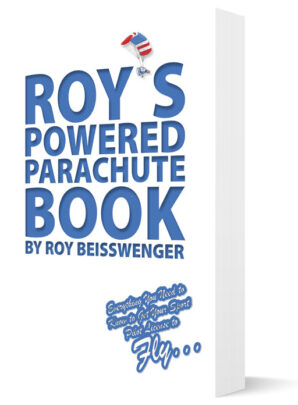 Roy's training program begins before the student gets to the airport. Anyone anywhere can start by studying a book Roy wrote on the subject. Roy’s Powered Parachute Book has 470 pages of content covering every aspect of flying powered parachutes. The inch-thick, large-format book is densely illustrated with many beautiful graphics that help explain everything. Roy admitted, “Writing a book wasn’t nearly as hard as illustrating the book.”
He combines the textbook with online training using the Brainscape app. Roy explained, “There is a lot of material to retain when learning to fly. By starting the ground training at home, students are able to get through the flight training, the knowledge test, and the check ride that much faster and stress-free.”
Roy's training program begins before the student gets to the airport. Anyone anywhere can start by studying a book Roy wrote on the subject. Roy’s Powered Parachute Book has 470 pages of content covering every aspect of flying powered parachutes. The inch-thick, large-format book is densely illustrated with many beautiful graphics that help explain everything. Roy admitted, “Writing a book wasn’t nearly as hard as illustrating the book.”
He combines the textbook with online training using the Brainscape app. Roy explained, “There is a lot of material to retain when learning to fly. By starting the ground training at home, students are able to get through the flight training, the knowledge test, and the check ride that much faster and stress-free.”
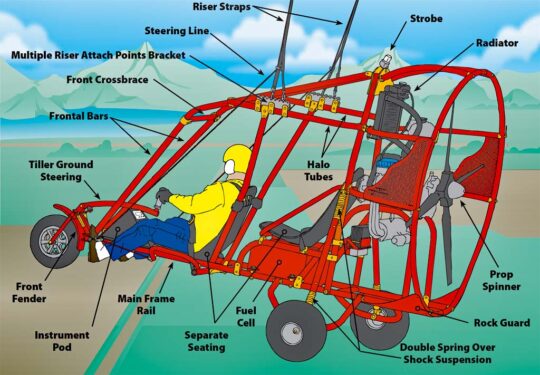
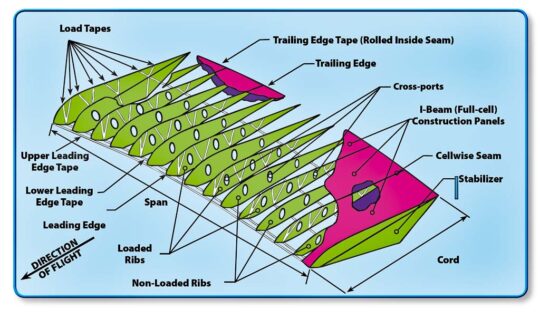 Thanks to a commitment to the safest practices, in the 30 years that Roy has been training powered parachutes, his program has been injury-free.
One of the key advantages of powered parachutes is their simplicity. These aircraft are designed to be easy to operate, and they require minimal training to fly. This makes them an ideal choice for people who are new to aviation, or who are looking for a more relaxed flying experience. The slow flying speed of powered parachutes makes them ideal low altitude sightseeing aircraft.
Thanks to a commitment to the safest practices, in the 30 years that Roy has been training powered parachutes, his program has been injury-free.
One of the key advantages of powered parachutes is their simplicity. These aircraft are designed to be easy to operate, and they require minimal training to fly. This makes them an ideal choice for people who are new to aviation, or who are looking for a more relaxed flying experience. The slow flying speed of powered parachutes makes them ideal low altitude sightseeing aircraft.
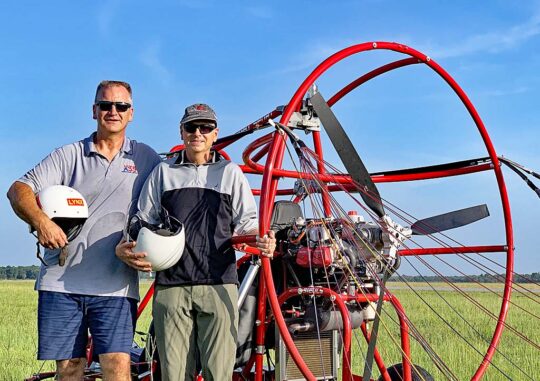
 https://youtu.be/u8gk_N4ex8s
https://youtu.be/XHuhfiuLxBM
https://youtu.be/u8gk_N4ex8s
https://youtu.be/XHuhfiuLxBM
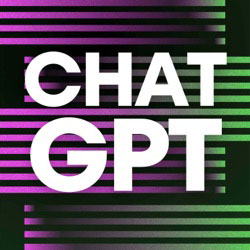 As an experiment, this article was triggered by Roy asking ChatGPT to write a draft as though it was written by me. Roy tweaked it and sent it to me for final editing.
Is that still an AI-produced document? Well, yes and no. It certainly changed through human input. However, it was helpful to move things along more quickly and that's one of the benefits many are seeing with this new technology. Since pilots are quite technically interested and adept, I thought readers would enjoy hearing about this use of AI.
As an experiment, this article was triggered by Roy asking ChatGPT to write a draft as though it was written by me. Roy tweaked it and sent it to me for final editing.
Is that still an AI-produced document? Well, yes and no. It certainly changed through human input. However, it was helpful to move things along more quickly and that's one of the benefits many are seeing with this new technology. Since pilots are quite technically interested and adept, I thought readers would enjoy hearing about this use of AI.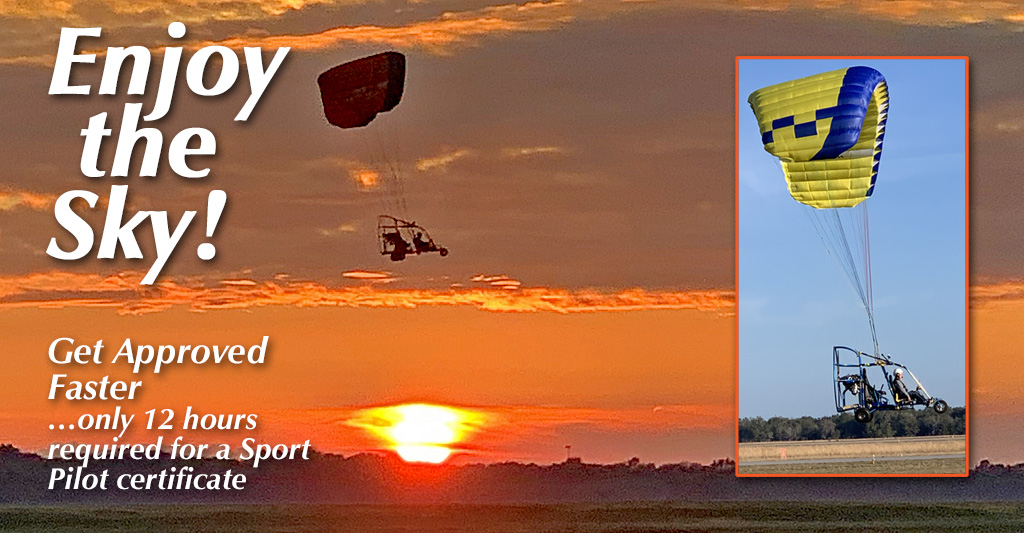
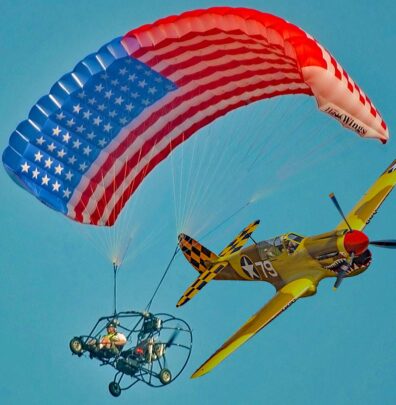
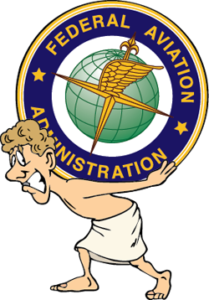 "This departs from the long-standing premise that the compensation a flight instructor receives for instruction is not compensation for piloting the aircraft, but rather is compensation for the instruction,” concurred Justine Harrison, AOPA’s general counsel.
EAA also senses danger, writing, "[An] overly broadly worded ruling by the court could interfere with the right of Limited Category and Experimental Category owners to receive training in their own aircraft. While hiring such aircraft for training has usually been conducted via exemption or LODA, owners and operators have always been able to pay instructors to fly in their own aircraft."
"This departs from the long-standing premise that the compensation a flight instructor receives for instruction is not compensation for piloting the aircraft, but rather is compensation for the instruction,” concurred Justine Harrison, AOPA’s general counsel.
EAA also senses danger, writing, "[An] overly broadly worded ruling by the court could interfere with the right of Limited Category and Experimental Category owners to receive training in their own aircraft. While hiring such aircraft for training has usually been conducted via exemption or LODA, owners and operators have always been able to pay instructors to fly in their own aircraft."
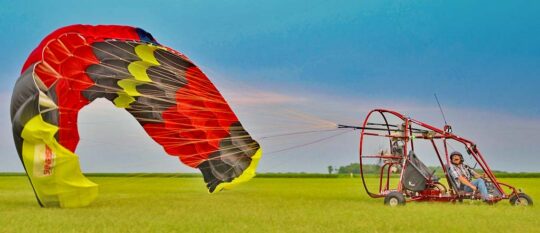
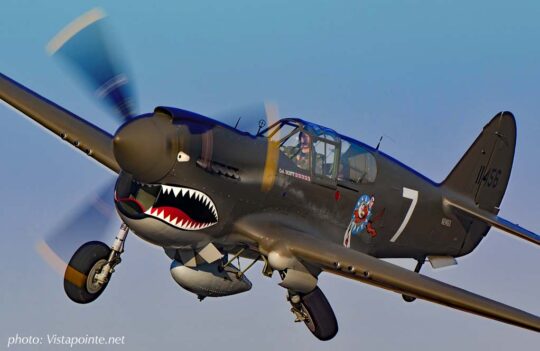 You see, for years, the FAA has kind of wanted things both ways.
You see, for years, the FAA has kind of wanted things both ways.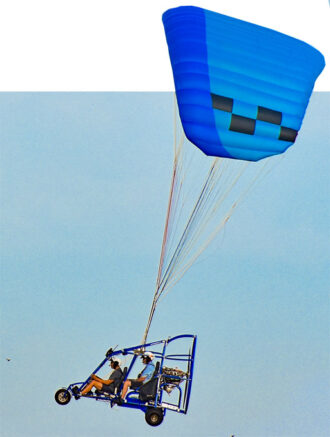 But what about Sport Pilot Flight Instructors (CFI-S)? Sport Pilot Flight Instructors are often simply Sport Pilots with the additional Sport CFI certificate. No Commercial Pilot Certificate. No 1st, 2nd, or 3rd Class Medical at all.
And the FAA is very strict about whether Sport Pilots can fly for “compensation or hire.” They can’t. The FAA makes that abundantly clear in the regulations. How’s this for making things painfully obvious?
§61.315 What are the privileges and limits of my Sport Pilot certificate?
(c) You may not act as pilot in command of a Light-Sport Aircraft:
(1) That is carrying a passenger or property for compensation or hire.
(2) For compensation or hire.
(3) In furtherance of a business.
But what about Sport Pilot Flight Instructors (CFI-S)? Sport Pilot Flight Instructors are often simply Sport Pilots with the additional Sport CFI certificate. No Commercial Pilot Certificate. No 1st, 2nd, or 3rd Class Medical at all.
And the FAA is very strict about whether Sport Pilots can fly for “compensation or hire.” They can’t. The FAA makes that abundantly clear in the regulations. How’s this for making things painfully obvious?
§61.315 What are the privileges and limits of my Sport Pilot certificate?
(c) You may not act as pilot in command of a Light-Sport Aircraft:
(1) That is carrying a passenger or property for compensation or hire.
(2) For compensation or hire.
(3) In furtherance of a business.
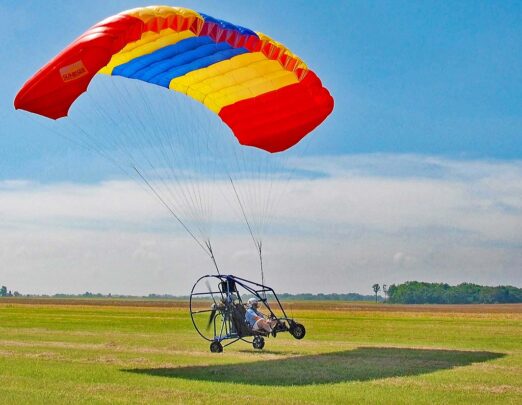 It seems to me that the FAA discharged its weapon at its own foot. Give those attorneys a bonus.
Now there is a solution. At least for the FAA’s Sport Pilot problem. LAMA and USUA have written the FAA and proposed additional language to both the GA flight instructor regulations and the Sport Pilot flight instructor regulations. It’s really pretty simple. We just want the FAA to include language saying that flight instructors have the privilege of providing flight instruction “for compensation or hire.”
Pretty simple, huh?
It seems to me that the FAA discharged its weapon at its own foot. Give those attorneys a bonus.
Now there is a solution. At least for the FAA’s Sport Pilot problem. LAMA and USUA have written the FAA and proposed additional language to both the GA flight instructor regulations and the Sport Pilot flight instructor regulations. It’s really pretty simple. We just want the FAA to include language saying that flight instructors have the privilege of providing flight instruction “for compensation or hire.”
Pretty simple, huh?